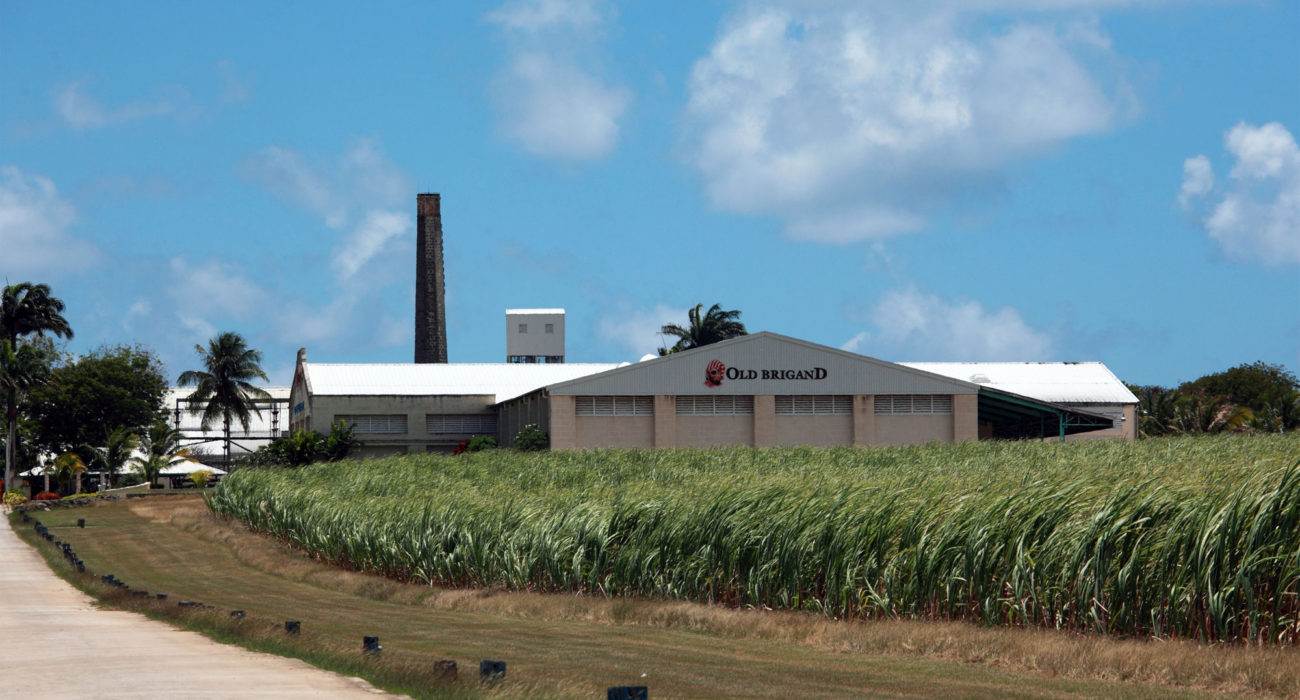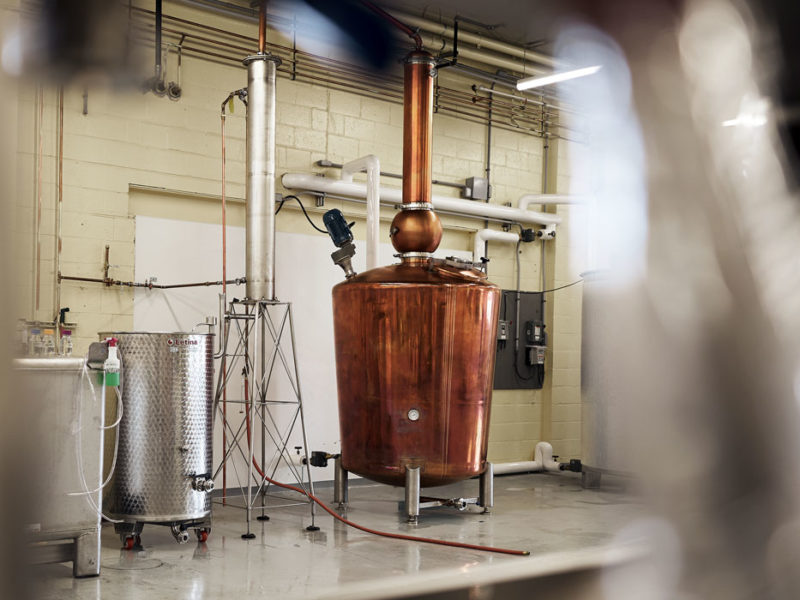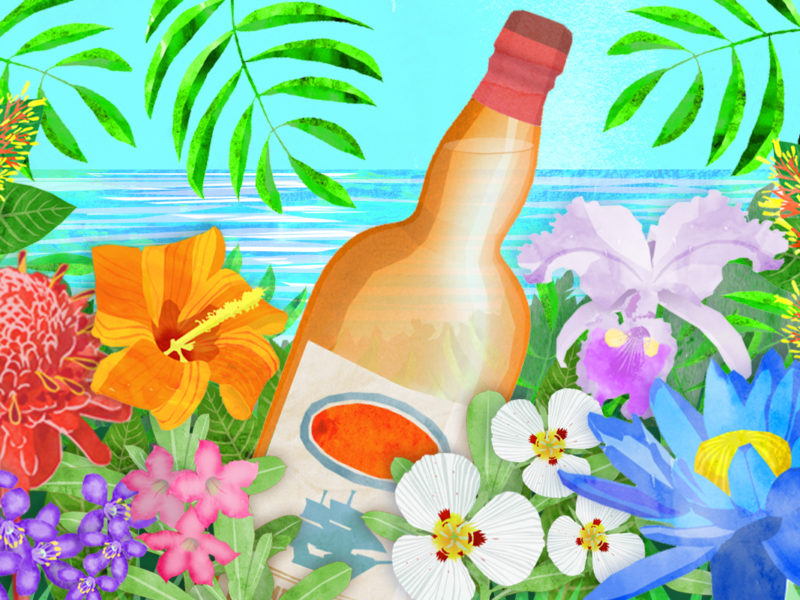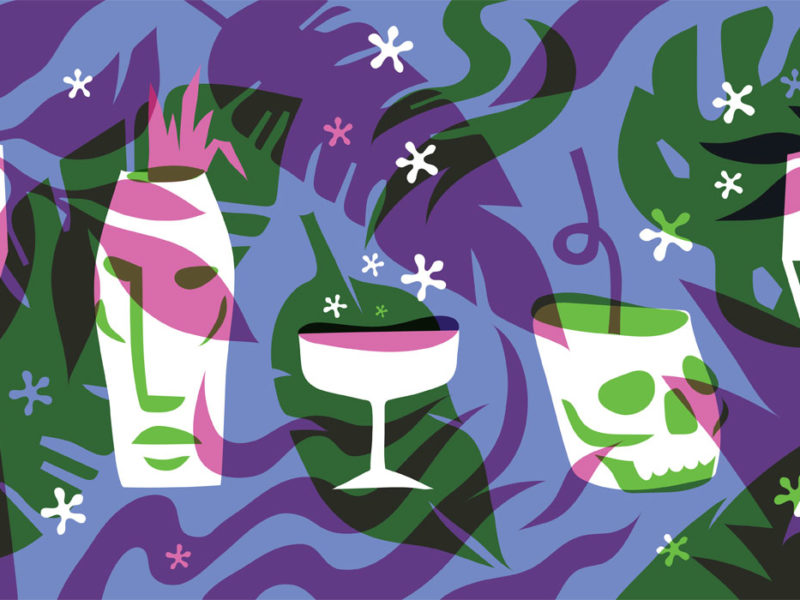In recent years, Barbados-based Foursquare and its outspoken leader Richard Seale have sprung to to the forefront of both the discussion of rum’s identity and, even more importantly, beautiful execution of the juice itself. The chief agents of this rise have been their aptly-named Exceptional Cask Series and collaborations with discerning bottler Velier.
Rum and whiskey writer Fred Minnick declared Foursquare’s limited releases to be “the Pappy of Rum” in recognition of their obsessive allure to collectors. While the top end of Foursquare’s line deserves the attention it receives, it doesn’t tell the distiller’s whole story; we must also consider Foursquare’s proud workhorses, the stalwart brands that have been part of Barbadian imbibing for generations.
Long before the advent of the Exceptional Cask Series, Foursquare produced beloved rums for the local market, which to this day show the strong character and heritage of the Barbadian approach to rum. The three key brands in question are Old Brigand, Alleyne Arthur’s Special Barbados Rum, and E.S.A. Field—all nearly unknown in the United States despite their rock-solid reputations back home.
Foursquare’s ability to fashion remarkable rums at affordable prices is, to our way of thinking, even more impressive than its triumphs with rarer bottlings: It is the best proof of their mastery of the craft.
A house style comes through in these brands just as it does in the limited release expressions. “There is of course much in common,” master distiller and blender Richard Seale told me. “They share fermentation and common marques from distillation in the blend.” Old Brigand shares features with both R. L. Seale and Doorly’s 5-Year, the original iteration of Doorly’s. Together, they mark three different ages (no age statement, 5, and 10) of what Seale called “the classic Barbadian style: balanced, soft, elegant, all ex-bourbon cask.”
Brian Miller, beverage director and partner at the Polynesian in New York, defined the Foursquare house style simply and directly: “The common denominator for these delicious rums is Richard Seale. Whatever that man touches turns to liquid gold.”
All three brands came to Foursquare as the result of consolidation among Barbados rum producers, with its parent, R. L. Seale & Company, absorbing other storied manufacturers. Since then, “Old Brigand has evolved, but the others are pretty close” to their origins, Seale explained.
Mr. Edward Samuel Allison Field brought his name to rum in 1909, producing it at the Stade Brothers distillery. Purchased by R. L. Seale in 1962, it is still the top-selling unaged rum in Barbados, with affectionate nicknames such as “see-through,” “Stade’s,” and the prophetic “Eat, Sleep, and Forget.”
This is a rare chance to experience an unaged Barbados rum. E.S.A. Field lays bare the nuances of distilled sugarcane, unmolested by any presence of wood. The result is something quite unusual: creamy, yet slightly vegetal. It is worth sipping for enjoyment and education, and is completely stellar in a Daiquiri.
Old Brigand and Special Barbados were acquired along with Alleyne Arthur & Hunte Ltd. in 1993. (This purchase also brought the more widely exported Doorly’s into the Foursquare fold.) Old Brigand is Barbados’s top-selling aged rum, with its grim pirate logo staring back at you from the décor of many a neighborhood rum shop.
Neither sports an age statement, but Richard Seale indicated that the Old Brigand and Special Barbados are both a blend of two- to three-year-old rums, whereas the Old Brigand Black Label (a version sometimes exported) is a five-year-old. In these rums, without extended aging and complex cask combinations, Seale has demonstrated how to make downright delicious—and gloriously Bajan—rum within a classical, spare framework.
These brands do not command the high prices of the Exceptional Cask Series, but they command great respect nonetheless.
“Maybe I’m biased due to the state of ‘cheap’ liquor in the U.S.A., but it’s rare to have such a ‘high floor’ of standards for the most affordable of brands like they do in Barbados,” said Dan Watson, bartender at Porco Lounge and Tiki Room in Cleveland. “Not surprising, since it is the birthplace of rum, and these brands come from the finest distillery in the world.”
David Barker, a Barbados-based craft cocktail bartender and owner of consultancy Barker’s B.E.S.T. (which stands for Barbados Elite Star Tenders), praised Old Brigand in particular as exemplifying a classical Barbadian approach: “Classic rum should show somewhat the notes of the barrel it’s aged in. [Foursquare] keeps things classic.”
Classic Barbadian rum is unapologetically rum. “You should taste the molasses, you should taste the age and the barrel,” Miller elaborated. “And what you shouldn’t taste is added sugar. It should have a dry finish, a lot of character, and great mouthfeel.” Miller, whose own brand of tiki often involves wearing a tricorn hat to work, had further praise for Old Brigand: “It is the best rum named after a pirate.”
If you’re near an outpost of the Total Wine juggernaut, a special import relationship with Foursquare means you can acquire Special Barbados and Old Brigand Black Label (along with the excellent and better-known Doorly’s range). No importer is currently in place for E.S.A. Field or the regular Old Brigand. “I get requests constantly for E.S.A. Field and Old Brigand in export markets—people love the rums,” Seale said. “But we can’t compete with the big players with these rums…Doorly’s had a long track record of export—first brand in a bottle exported from Barbados—so it just made sense to concentrate our export efforts on that brand. It is also positioned high where we can compete.”
This means we will have to visit Barbados again and again, and with more suitcases. Of course, a few more constant requests couldn’t hurt either.
Green and Gold Cooler
Makes 2 drinks
Direct from Barbados, an original cocktail recipe featuring some unusual ingredients.
1 green (unripe) mango; peeled, pit discarded, diced
1 cup water
4 ounces Old Brigand rum
1 ounce fresh lime juice
2 1/2 ounces salted caramel syrup (recipe follows)
Slices of fresh ripe mango, lightly sprinkled with sea salt and black pepper, for garnish
Puree diced mango and water in a blender. Strain the juice from the pulp.
Combine strained green mango juice with the other ingredients in a large cocktail shaker filled with ice. Shake, then strain into two chilled glasses filled with fresh ice. Garnish with prepared mango.
Recipe by David Barker
Salted Caramel Syrup
Makes about 18 ounces syrup
Salted caramel syrup echoes the naturally dusky sweetness of a perfectly ripe mango. Several commercially available brands of salted caramel are readily available, but if you’d like to try your hand at making your own syrup, here’s an easy recipe.
1 cup white sugar
2 cups water
1/2 teaspoon sea salt
Heat sugar and 1 cup water in a heavy-bottomed, 2-quart saucepan over medium heat, stirring with a wooden spoon or silicone spatula until the sugar dissolves.
When mixture begins to simmer, adjust heat and simmer for 8-10 minutes, brushing down the sides of the pan with a wet pastry brush to discourage crystal formation, until the mixture becomes dark golden amber in color. Do not stir the syrup; stirring at this point will cause crystals to form when the syrup cools.
Remove pan from heat and carefully add remaining 1 cup water (use caution: mixture may spatter). Return pan to cooktop and stir over low heat until the mixture becomes liquid again. Immediately remove from heat and let cool completely before transferring to a sterilized glass container (our suggestion: divide syrup between two 10-ounce glass bottles). Syrup will remain stable at room temperature indefinitely.




